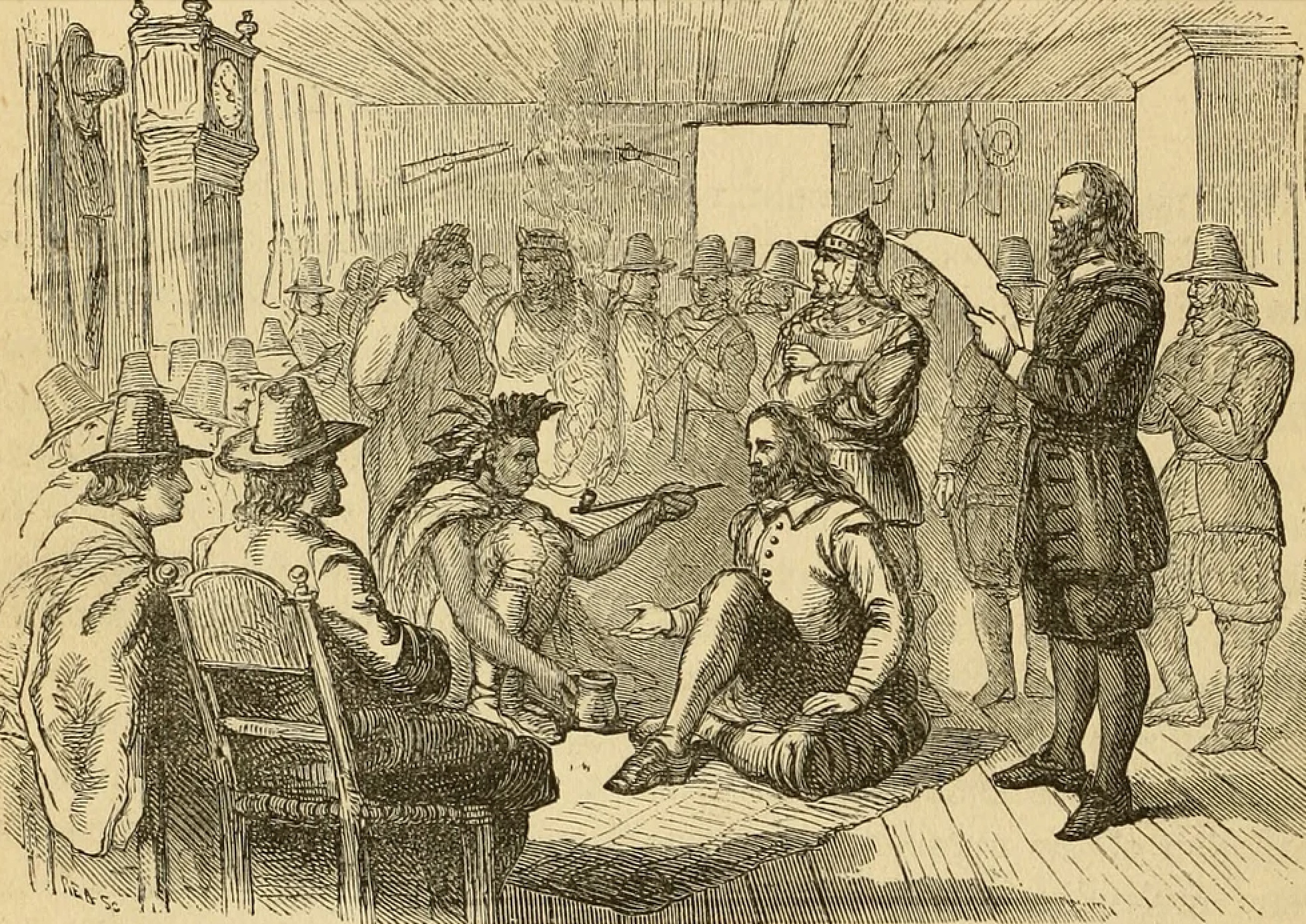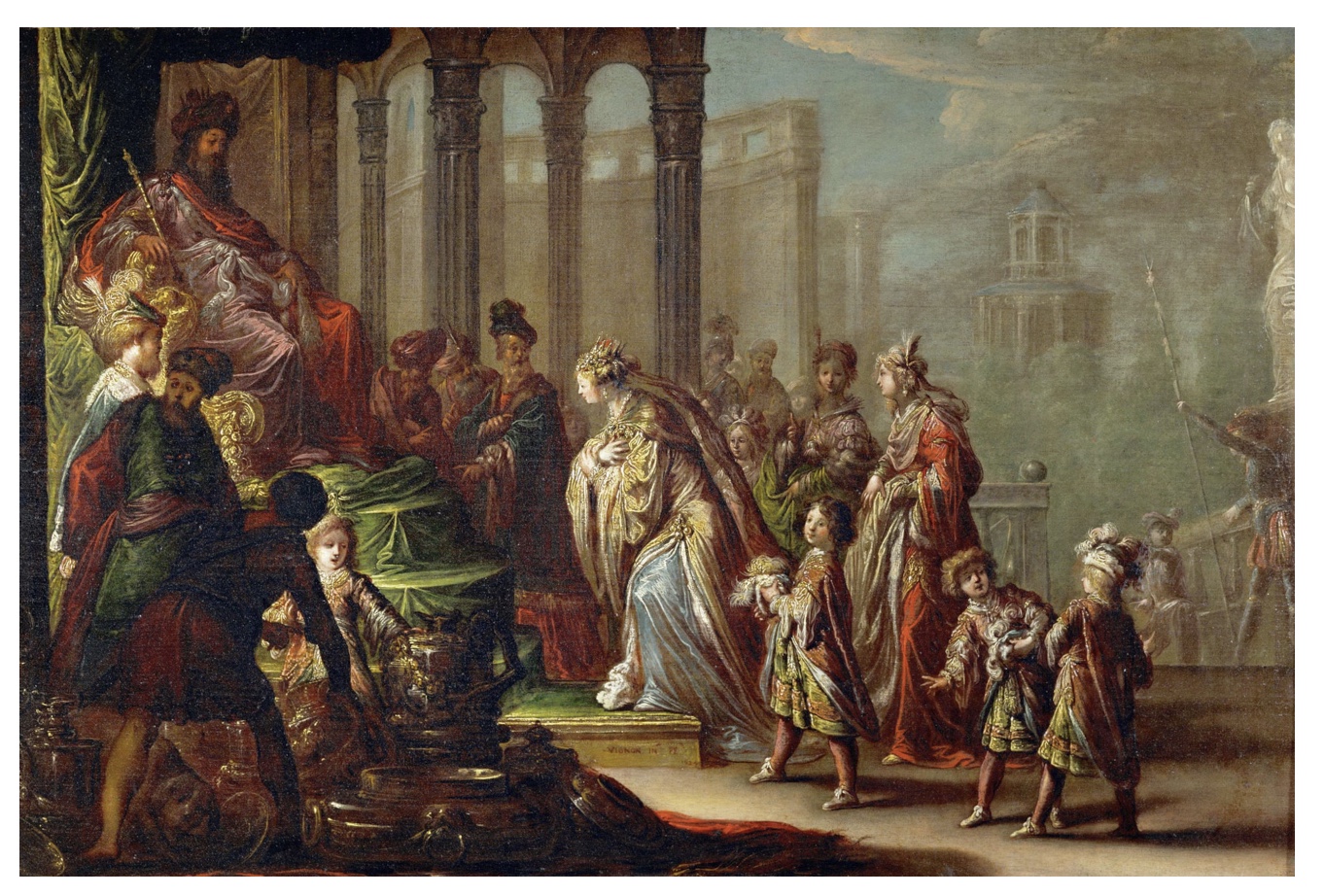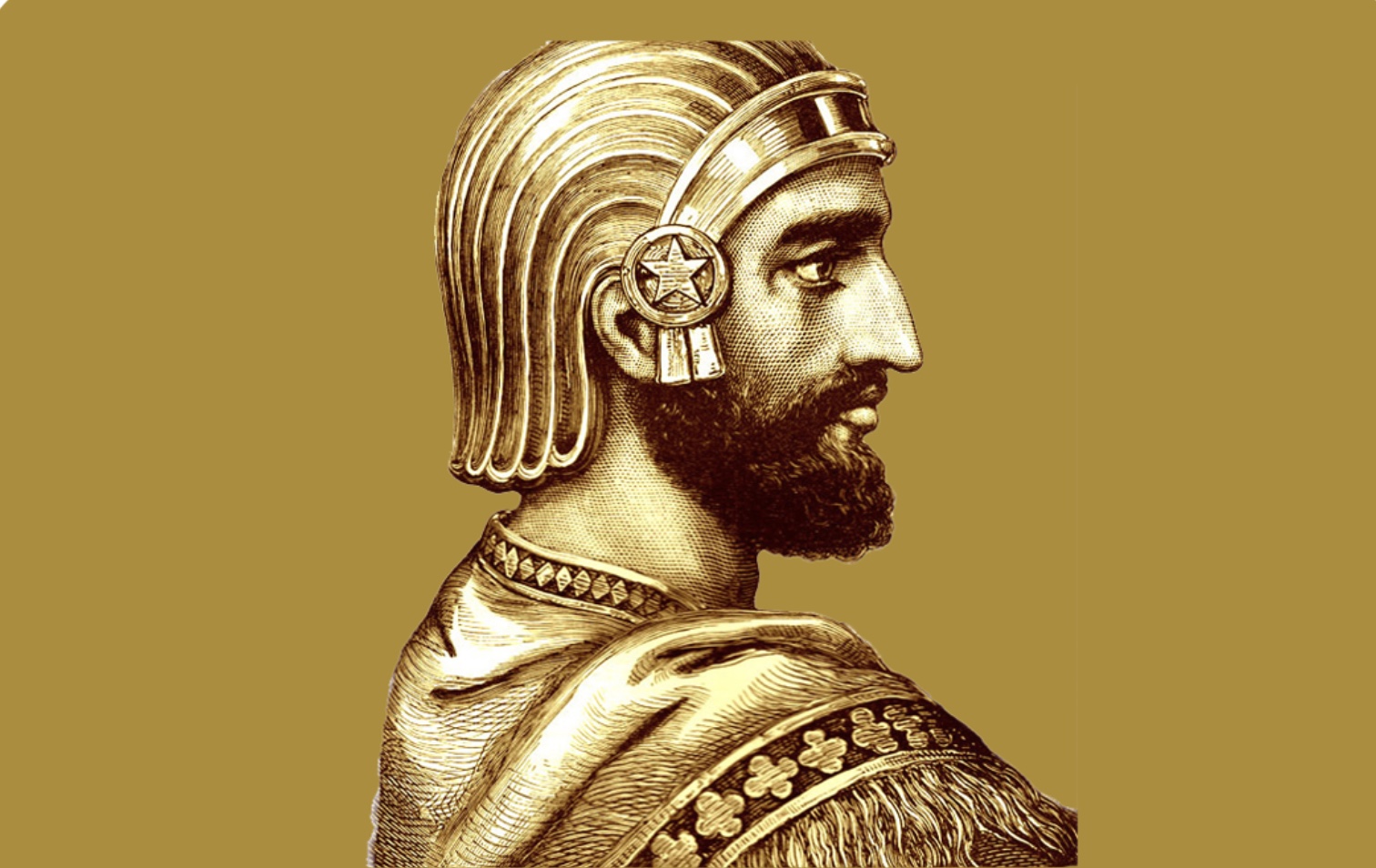Under the leadership of the Prophet Muhammad, the Islamic community, or Ummah, rapidly expanded.
After Muhammad’s death, his successors, known as Caliphs, continued his mission, spreading Islam and unifying vast territories under a single political and religious framework.
The initial expansion was marked by military conquests and strategic alliances, bringing regions such as the Levant, North Africa, and Persia under Islamic rule.
This period of rapid expansion laid the foundation for the vast empire that
The Islamic Empire, spanning three continents—Asia, Africa, and Europe—represents one of history’s most influential and expansive civilizations.
Its legacy is rich with contributions across various fields such as science, mathematics, medicine, architecture, and literature.
From its inception in the 7th century to its decline in the early 20th century, the Islamic Empire’s story is one of remarkable growth, cultural flourishing, and resilient adaptability.
This overview provides a glimpse into the major periods and events that defined the Islamic Empire.
The Rise of the Islamic Empire
The rise of the Islamic Empire began in the early 7th century with the advent of Islam in the Arabian Peninsula. would follow.
The unification under a common religious and legal system enabled efficient governance and facilitated the integration of diverse cultures and peoples.
This early period was crucial in establishing the principles and structures that would define the Islamic Empire for centuries.
The Caliphs, as both political and spiritual leaders, played a pivotal role in guiding the expansion and consolidation of the empire, ensuring the spread of Islamic teachings and the establishment of a cohesive state.
The First Caliph
The first Caliph, Abu Bakr, played a crucial role in consolidating the Islamic state.
He successfully quelled internal revolts and laid the foundation for future expansions. His leadership established the precedent for the caliphate system, which would govern the Islamic world for centuries.
Abu Bakr’s reign was marked by the Ridda Wars, a series of military campaigns against Arabian tribes that had renounced Islam following the Prophet’s death.
These campaigns were essential in reasserting central authority and ensuring the unity of the nascent Islamic state.
Abu Bakr’s steadfast commitment to the cause of Islam and his effective leadership set a strong precedent for his successors.
He also initiated the compilation of the Quran, preserving the teachings of the Prophet Muhammad for future generations.
His brief but impactful rule laid the groundwork for the rapid expansion and consolidation of the Islamic Empire under subsequent caliphs.
The Golden Age of the Islamic Empire
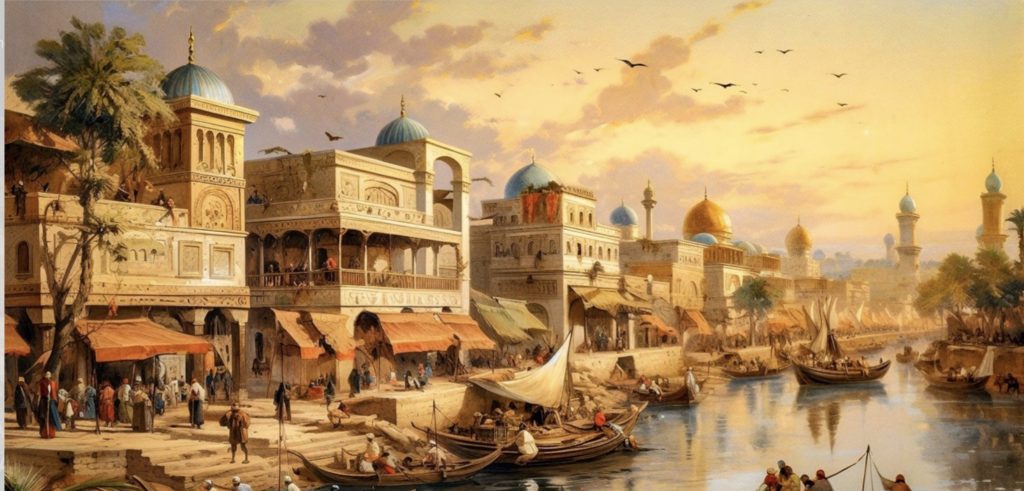
The Golden Age of the Islamic Empire, roughly from the 8th to the 14th century, was a period of unparalleled cultural, economic, and scientific flourishing.
During this era, the Islamic world became a beacon of knowledge and progress.
Scholars in cities like Baghdad, Cordoba, and Cairo made groundbreaking advancements in fields such as mathematics, astronomy, medicine, and philosophy.
The translation movement, centered in the House of Wisdom in Baghdad, saw the works of ancient Greek, Persian, and Indian scholars translated into Arabic, preserving and enhancing the knowledge of previous civilizations.
This intellectual fervor was supported by the patronage of caliphs and wealthy elites, who funded libraries, universities, and observatories.
Trade and commerce thrived, connecting the Islamic Empire with distant regions and facilitating the exchange of goods and ideas.
The flourishing of arts and architecture, exemplified by iconic structures such as the Alhambra and the Great Mosque of Cordoba, further highlighted the empire’s cultural achievements.
This period of prosperity and intellectual vibrancy left a lasting legacy, influencing the Renaissance in Europe and contributing to the global body of knowledge.
Umayyad Dynasty
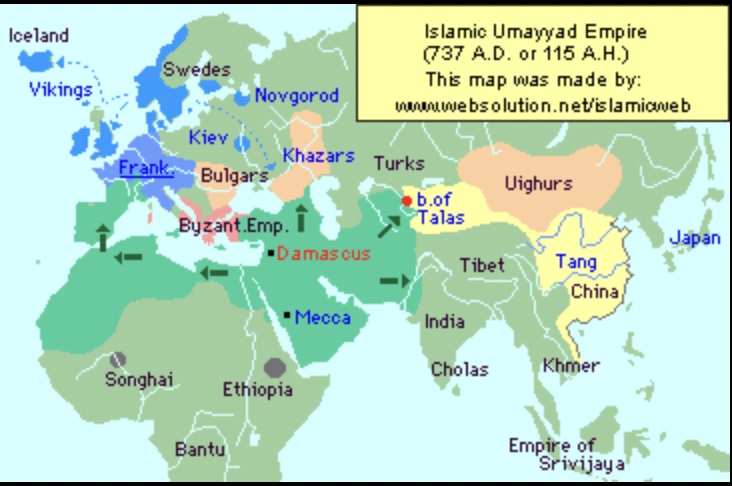
The Umayyad Dynasty, established in 661 CE, marked the first major caliphate after the Rashidun Caliphs.
Under Umayyad rule, the Islamic Empire expanded its borders from Spain in the west to India in the east.
The Umayyads are also known for their architectural achievements, including the construction of the Dome of the Rock in Jerusalem.
Their administration introduced Arabic as the empire’s official language, standardizing administrative practices and promoting cultural unity.
The Umayyad caliphs implemented significant military and economic reforms, strengthening the empire’s infrastructure and trade networks.
Despite their contributions, the Umayyads faced internal dissent and opposition from various factions, including the supporters of Ali, the Prophet’s cousin and son-in-law.
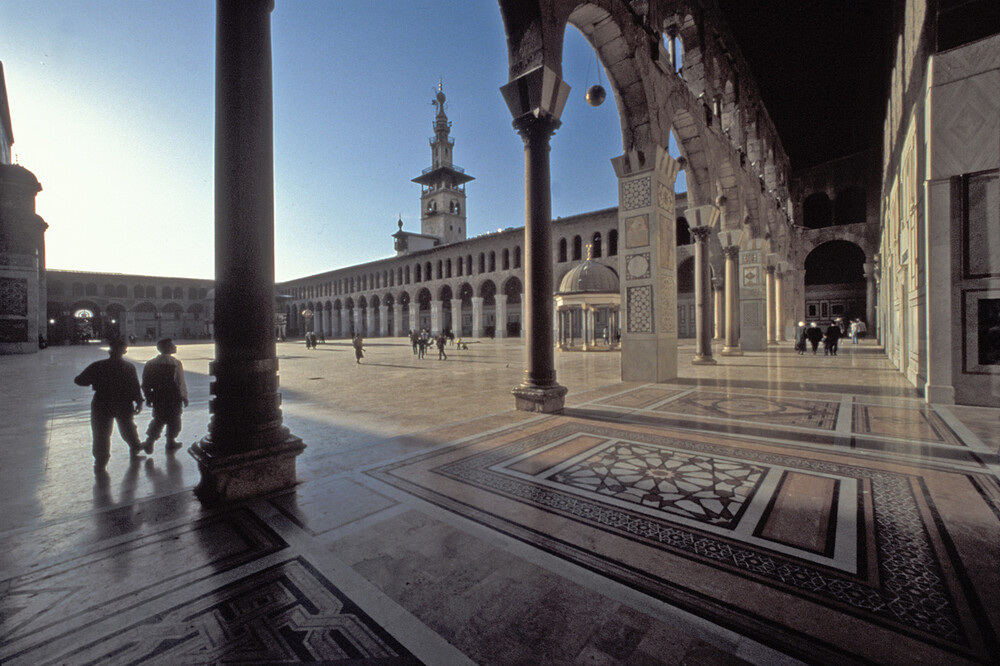
These tensions eventually led to the Umayyad downfall, but their legacy endured in the cultural and administrative foundations they established.
Abbasid Dynasty
The Abbasid Dynasty, which came to power in 750 CE, shifted the Islamic empire‘s capital to Baghdad.
This period is often regarded as the pinnacle of the Islamic Golden Age.
The Abbasids fostered a rich intellectual culture, with scholars making significant advancements in fields such as algebra, astronomy, and medicine.
The House of Wisdom in Baghdad became a renowned center for learning and translation.
The Abbasids emphasized the importance of knowledge and cultural exchange, drawing scholars from diverse backgrounds to their court.
They also promoted the development of arts and literature, with works like “One Thousand and One Nights” emerging during this period.
The Abbasid caliphs’ patronage of science and culture created an environment where ideas flourished, and the Islamic world became a global center of innovation and learning.
The decline of the Abbasid caliphate in the 13th century marked the end of this golden era, but its intellectual and cultural achievements had a lasting impact on the world.
The Fatimid Caliphate
The Fatimid Caliphate, founded in 909 CE, was notable for its establishment of Cairo as a major cultural and intellectual hub.
The Fatimids, who claimed descent from the Prophet’s daughter Fatimah, emphasized the importance of education and built numerous libraries and educational institutions.
Their reign saw the construction of Al-Azhar University, which remains one of the oldest and most prestigious institutions of higher learning in the world.
The Fatimids also promoted a diverse and inclusive society, welcoming scholars and scientists from various religious and cultural backgrounds.
This period witnessed significant advancements in fields such as astronomy, medicine, and philosophy.
The Fatimid caliphs’ support for the arts and sciences created a vibrant cultural milieu that attracted intellectuals and artisans from across the Islamic world.
Despite facing political and military challenges, the Fatimids’ contributions to knowledge and culture left a lasting legacy that continues to influence the Islamic world today.
The Seljuk Empire
The Seljuk Empire, rising to prominence in the 11th century, played a crucial role in revitalizing Islamic culture and political unity after a period of fragmentation.
The Seljuks were instrumental in defending the Islamic world against the Crusades and in promoting Persian culture and administrative practices.
Their reign saw the development of institutions such as the Nizamiyyah, a network of madrasas (educational institutions) that contributed to the dissemination of knowledge and the training of scholars.
The Seljuks also supported the arts and architecture, commissioning the construction of impressive structures such as the Great Mosque of Isfahan.
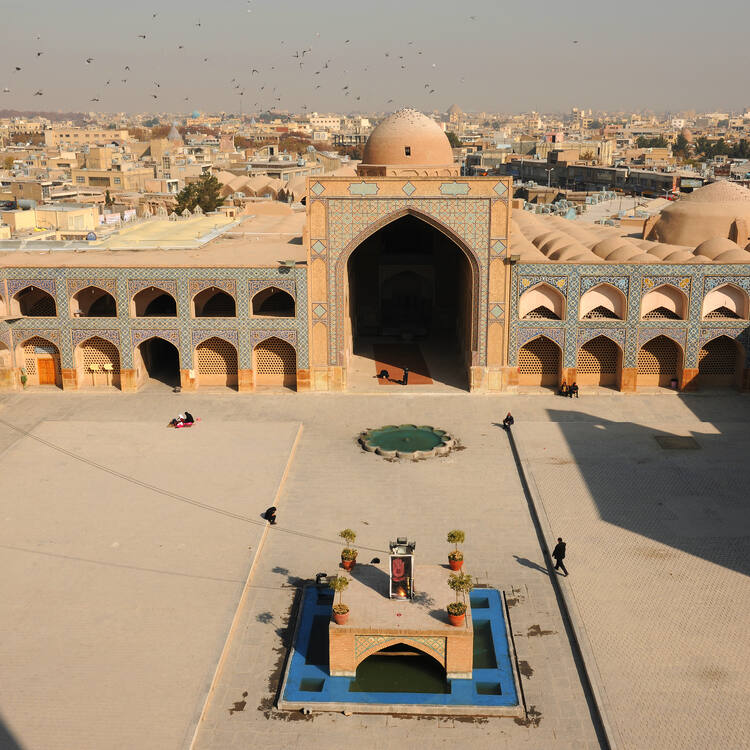
Their military prowess and administrative acumen helped stabilize the region and foster a sense of unity among diverse Islamic communities.
The Seljuk Empire’s contributions to culture, education, and governance had a profound impact on the Islamic world, paving the way for future dynasties and shaping the course of Islamic history.
The Challenges of the Islamic Empire
Despite its grandeur, the Islamic Empire faced numerous challenges that tested its resilience and adaptability.
These challenges came in various forms, including internal strife, external invasions, and economic difficulties.
Internal conflicts, such as sectarian divisions and power struggles, often threatened the unity of the empire.
External threats, including invasions by the Crusaders and Mongols, posed significant challenges to the empire’s stability and security.
Economic issues, such as trade disruptions and resource depletion, further complicated governance and development.
These challenges required innovative solutions and adaptive strategies to ensure the empire’s survival and prosperity.
The Islamic Empire’s ability to navigate these difficulties demonstrated its resilience and the strength of its institutions and leadership.
Understanding these challenges provides valuable insights into the complexities and dynamics of the Islamic Empire’s history.
The Mongol Invasion
One of the most devastating challenges was the Mongol invasion in the 13th century.
The Mongols, led by Genghis Khan and later his descendants, swept through the Islamic territories with unprecedented ferocity.
The sack of Baghdad in 1258 CE marked a catastrophic blow to the Islamic world, leading to the destruction of countless cultural and scientific treasures.
The Mongol invasion caused widespread devastation, disrupting trade routes, agricultural production, and urban centers.
The loss of Baghdad, a major center of learning and culture, had a profound impact on the Islamic world.
Despite the destruction, the resilience of the Islamic civilization was evident in its ability to recover and adapt.
New centers of power and learning emerged, and the Islamic world continued to contribute to global knowledge and culture.
The Mongol invasion, while a significant setback, also highlighted the enduring strength and adaptability of the Islamic Empire.
The Decline of the Ottoman Dynasty
The Ottoman Dynasty, which rose to prominence in the late 13th century and ruled for over 600 years, witnessed a gradual decline in the 17th century.
The once-formidable empire faced internal strife, military defeats, and economic challenges. By the early 20th century, the Ottoman Empire had disintegrated, leading to the establishment of modern nation-states in its former territories.
The decline of the Ottoman Empire was marked by several factors, including administrative inefficiencies, corruption, and the inability to keep pace with technological and military advancements.
External pressures from European powers also contributed to the empire’s weakening. The loss of territories and influence further eroded the Ottomans’ power.
Despite these challenges, the Ottoman Empire left a rich cultural and architectural legacy, with iconic structures such as the Hagia Sophia and the Blue Mosque standing as testaments to its grandeur.
The decline of the Ottoman Dynasty marked the end of an era, but its influence on the history and culture of the Islamic world remains significant.
Conclusion
The history of the Islamic Empire is a testament to human ingenuity, resilience, and the pursuit of knowledge.
From its rise under the first Caliphs to the cultural zenith during the Golden Age, and through the challenges that led to its eventual decline, the Islamic Empire’s legacy continues to influence the world today.
Its contributions to various fields have left an indelible mark on human civilization, reminding us of the power of unity, faith, and the relentless quest for understanding.
The story of the Islamic Empire is a reminder of the enduring strength of cultural and intellectual exchange and the importance of preserving and promoting knowledge for future generations.
The Islamic Empire’s achievements and challenges provide valuable lessons for contemporary societies, highlighting the importance of resilience, adaptability, and the pursuit of excellence in the face of adversity.
Frequently Asked Questions
Q1: What is the Islamic Empire?
A1: The Islamic Empire refers to a series of political entities that ruled various parts of the world under Islamic governance from the 7th century onwards. It is marked by significant cultural, scientific, and economic advancements, and its influence spanned across Asia, Africa, and Europe.
Q2: Who founded the Islamic Empire?
A2: The Islamic Empire was founded by the followers of the Prophet Muhammad after his death in 632 CE. The first Caliph, Abu Bakr, succeeded Muhammad and played a crucial role in consolidating the early Islamic state.
Q3: What were the major dynasties of the Islamic Empire?
A3: The major dynasties of the Islamic Empire include:
- The Rashidun Caliphate (632-661 CE)
- The Umayyad Caliphate (661-750 CE)
- The Abbasid Caliphate (750-1258 CE)
- The Fatimid Caliphate (909-1171 CE)
- The Seljuk Empire (11th-14th centuries)
- The Ottoman Empire (1299-1922 CE)
Q4: What was the Golden Age of the Islamic Empire?
A4: The Golden Age of the Islamic Empire occurred roughly from the 8th to the 14th century. It was a period of extensive cultural, scientific, and economic flourishing. Significant advancements were made in mathematics, astronomy, medicine, and philosophy, and many classic works from other cultures were translated into Arabic.
Q5: How did the Islamic Empire contribute to science and culture?
A5: The Islamic Empire made significant contributions to various fields. In science, scholars like Al-Khwarizmi developed algebra, while Ibn Sina (Avicenna) made advances in medicine. Culturally, the empire produced renowned works of literature, such as “One Thousand and One Nights,” and impressive architectural achievements like the Alhambra and the Dome of the Rock.
Q6: What were the key challenges faced by the Islamic Empire?
A6: The Islamic Empire faced numerous challenges, including internal strife, sectarian divisions, and external invasions. Major challenges included the Mongol invasion in the 13th century, which led to the sack of Baghdad, and the gradual decline of the Ottoman Empire due to internal and external pressures.
Q7: What was the impact of the Mongol invasion on the Islamic Empire?
A7: The Mongol invasion in the 13th century had a devastating impact on the Islamic Empire. The sack of Baghdad in 1258 CE resulted in the destruction of countless cultural and scientific treasures. Despite this, the Islamic world showed resilience, eventually recovering and continuing to contribute to global knowledge.
Q8: How did the Ottoman Empire decline?
A8: The Ottoman Empire, which ruled for over 600 years, began to decline in the 17th century due to a combination of internal inefficiencies, corruption, military defeats, and economic challenges. External pressures from European powers also contributed to the decline. By the early 20th century, the Ottoman Empire had disintegrated, leading to the formation of modern nation-states.’
You may also like: Dive into the Juicy History of King Solomon, From His Wisdom to His Wealth






